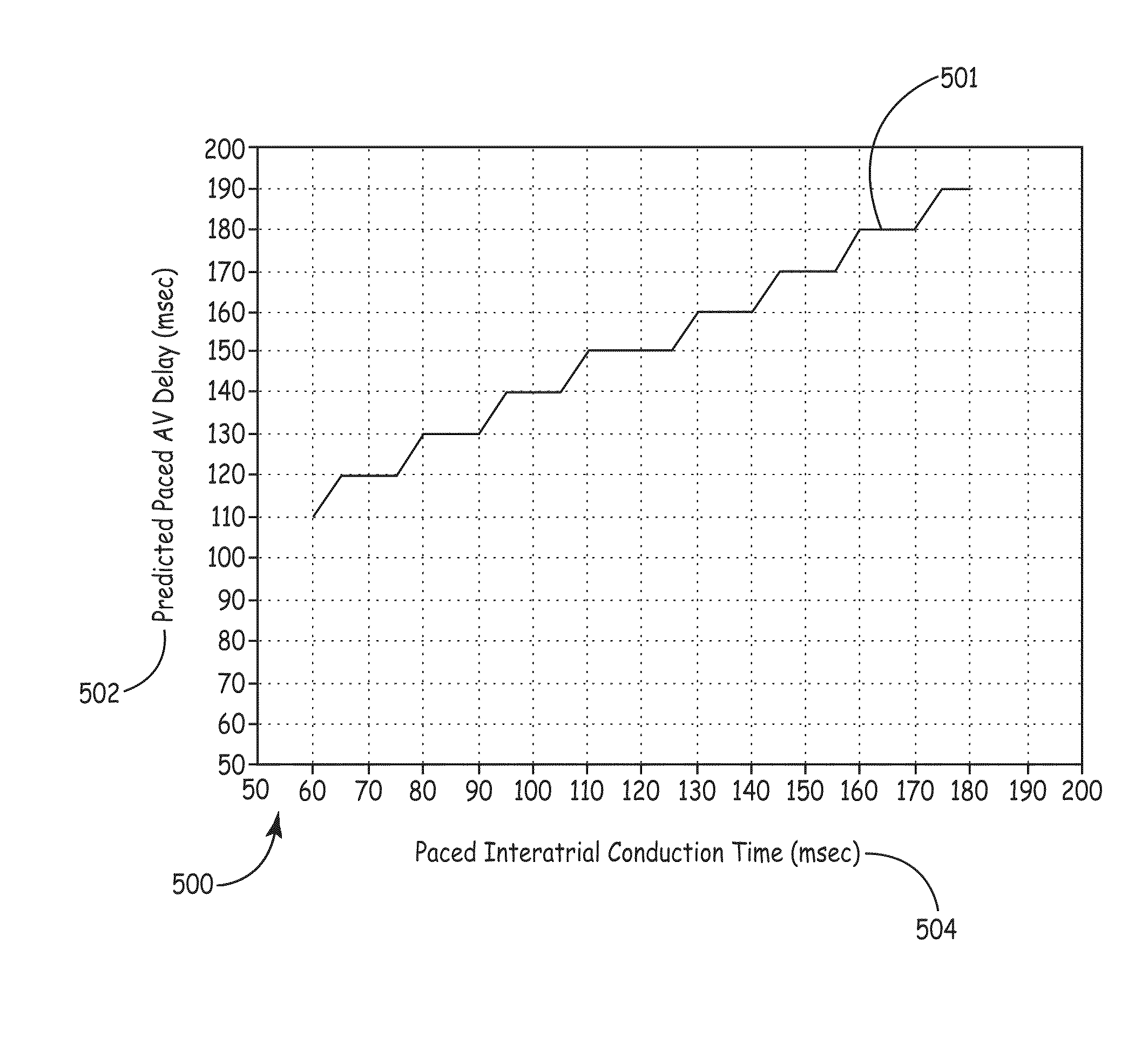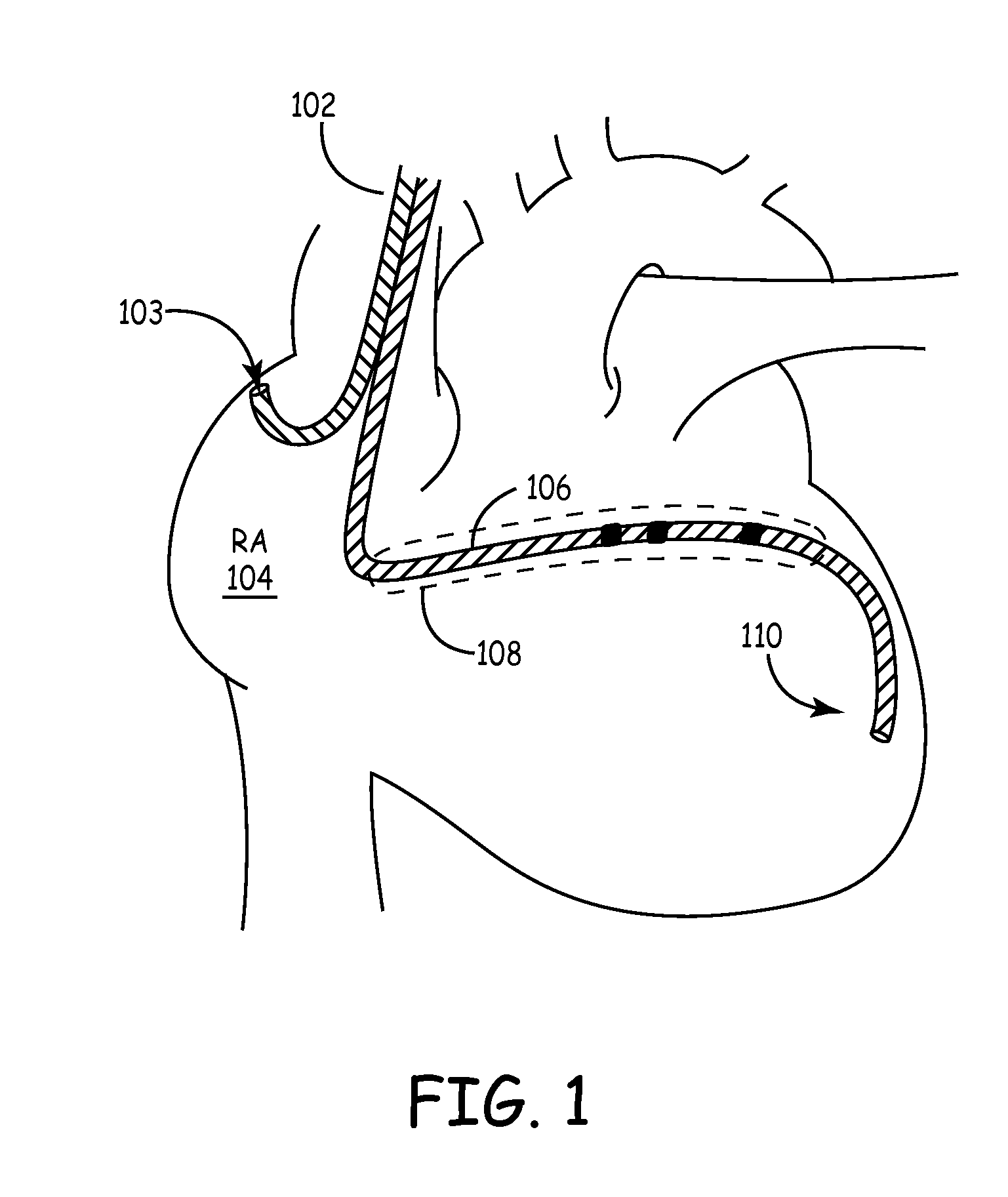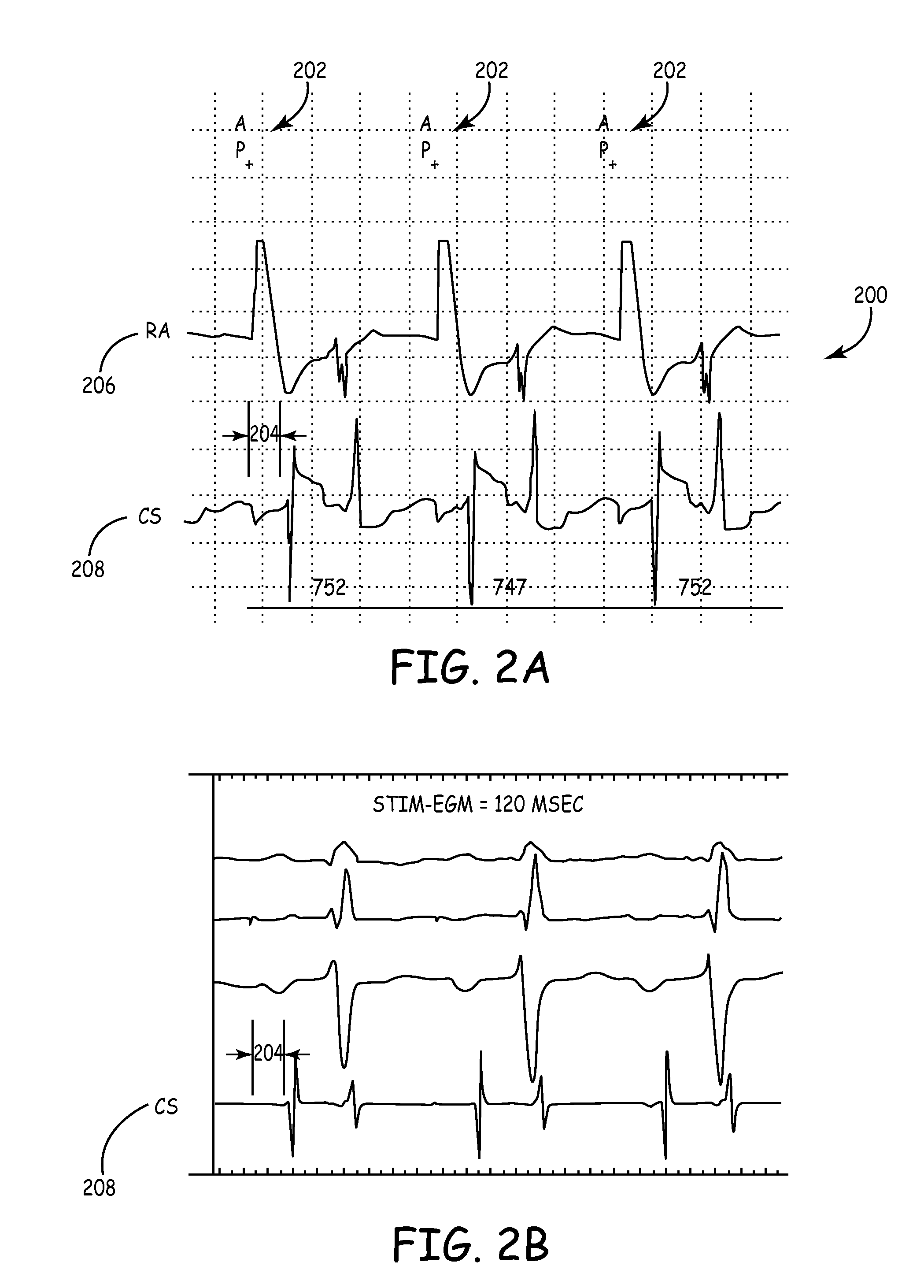Predicting chronic optimal A-V intervals for biventricular pacing via observed inter-atrial delay
a technology of inter-atrial delay and optimal a-v interval, which is applied in the field of optimal programming of biventricular implantable pulse generators, can solve the problems of increasing the cost of chf treatment, increasing the difficulty of optimization studies, and increasing the difficulty of predicting optimal a-v intervals for biventricular filling
- Summary
- Abstract
- Description
- Claims
- Application Information
AI Technical Summary
Benefits of technology
Problems solved by technology
Method used
Image
Examples
Embodiment Construction
nt) visit showing the relative placement of electrodes for a Bi-V pacing engine according to the invention.
[0014]FIG. 9 is a temporal representation of the IACT for a given cardiac cycle of a patient showing two different sensing vectors used to determine the IACT of a subject.
DETAILED DESCRIPTION OF THE ILLUSTRATED EMBODIMENTS
[0015]In the following detailed description, references are made to illustrative embodiments for optimizing A-V delay interval timing for CRT delivery. Among heart failure patients most likely to benefit from the present invention include, without limitation, those having moderately severe cardiomyopathy (e.g., an ejection fraction less than 35%) with persistent symptoms of Class III or IV heart failure—per the New York Heart Association (NYHA) classification system—despite a stable and optimized medical regimen, dilated LV, and QRS duration greater than about 130 milliseconds (ms).
[0016]As depicted in FIG. 1, implantation of a medical electrical lead 102 with...
PUM
 Login to View More
Login to View More Abstract
Description
Claims
Application Information
 Login to View More
Login to View More - R&D
- Intellectual Property
- Life Sciences
- Materials
- Tech Scout
- Unparalleled Data Quality
- Higher Quality Content
- 60% Fewer Hallucinations
Browse by: Latest US Patents, China's latest patents, Technical Efficacy Thesaurus, Application Domain, Technology Topic, Popular Technical Reports.
© 2025 PatSnap. All rights reserved.Legal|Privacy policy|Modern Slavery Act Transparency Statement|Sitemap|About US| Contact US: help@patsnap.com



